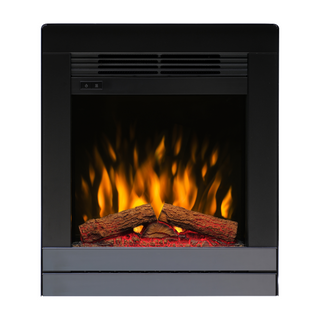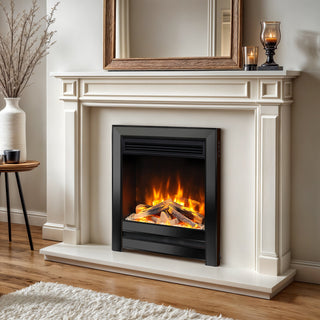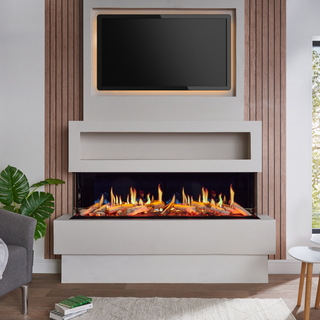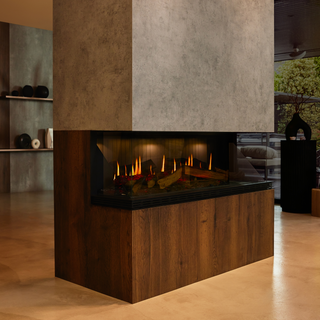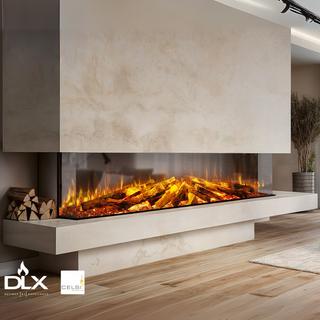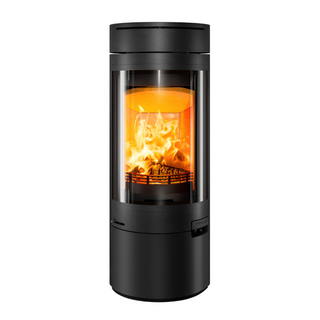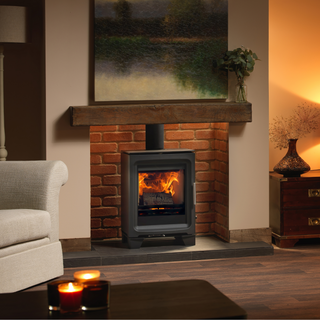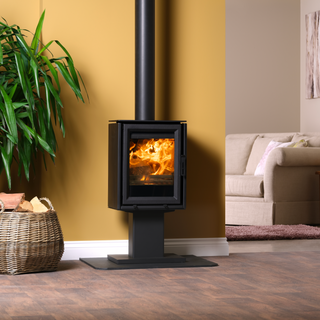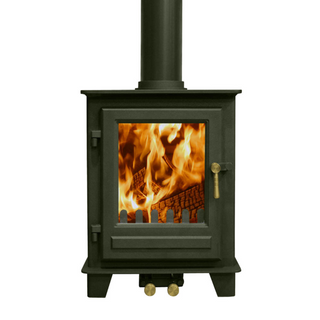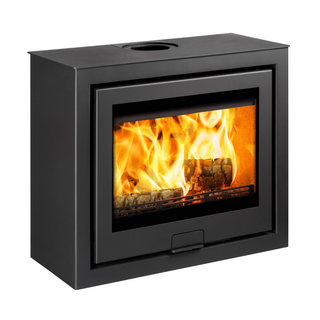When it comes to adding warmth and ambience to your home, fireplaces are no longer just a necessity - they’re a statement. Today, two of the most popular options are electric fires and bioethanol fires, each with their own advantages and considerations. Here’s a closer look at the differences, benefits, and drawbacks to help you choose the perfect fit.
🔥 Real Flame vs Simulated Flame
One of the most obvious differences is the type of flame you’ll enjoy. Bioethanol fires burn a real, natural flame, giving your room the authentic flicker, glow, and movement of a traditional fire. The warmth feels more organic, and the visual experience can be mesmerising. Generally speaking, bioethanol fires produce more heat than electric fires, with some reaching 3.5kW outputs versus the maximum 2kW output with electric. On the other hand, electric fires use LED technology to simulate flames. While some modern electric models offer impressively realistic visuals, they don’t produce a real flame- though this can be an advantage for safety and placement.
💰 Cost Considerations
Electric fires generally cost less to purchase upfront, making them an attractive option if budget is a priority. They also have low running costs, especially if you’re using the flame-only feature without heat. Bioethanol fires, while visually striking, require ongoing fuel purchases, and the cost can add up depending on usage.
❤️🔥 Heating Functionality
Electric fires offer flexibility: you can run the flame effect with or without heat, making them ideal for year-round ambiance without raising the room temperature. Bioethanol fires, in contrast, must produce heat to create a flame. This means they always contribute warmth, which is a benefit in colder months but may be less convenient during summer or in smaller spaces.
🛋️ Installation and Location
Both options are relatively flexible, but there are distinctions. Electric fires don’t require fuel storage or ventilation, meaning you can install them almost anywhere - even in apartments, above cabinets, or in rooms without chimneys. Bioethanol fires also don’t need a chimney, but they do require careful placement for safety, ventilation, and refilling access.
👷♂️ Safety and Maintenance
Electric fires are low-maintenance, with minimal cleaning and no real combustion involved. Bioethanol fires require more attention: you’ll need to refill fuel, clean occasional spills, and ensure proper ventilation. However, they don’t produce ash or smoke, unlike traditional wood-burning fireplaces.
🤔 Making the Choice
If your priority is a genuine, natural flame with eco-friendly fuel and a focal point for your room, a bioethanol fire could be perfect. But if you want convenience, lower running costs, flexible placement, and the option to enjoy the flames without heat, an electric fire may be the better choice.
Ultimately, the “best” fire depends on your lifestyle, budget, and the atmosphere you want to create. Some homeowners even choose to enjoy both: an electric fire for year-round ambience and a bioethanol fire for those cozy evenings when nothing beats the warmth and beauty of a real flame.







